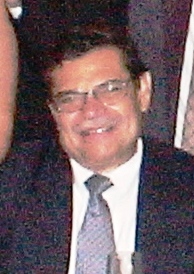(Dr. Gutierrez has developed numerous dynamic models over 30 years of working in the industry. He was previously a developer for one of the major simulation software packages and has written models for several other packages, including General Electric’s PSLF program.)
From time to time it is necessary to develop user models for equipment which do not have representation in commercial software packages for stability assessments. Emerging technologies and new equipment are typical bases for user models. Sometimes an approximate model is applied comprised of a simple “blackbox” with current/voltage input and output. In a pinch, a forced fit to an existing model may be attempted. But in most cases, developing a new user model is a necessity if the objective is to accurately assess the interaction of equipment on the power network for stability.
The dynamic model may be developed by the software supplier, or, if there are inherent confidentiality issues with the supplier, by an independent consultant such as Pterra.

 As a type of electrical load, steel mills are the equivalent of jackhammers early in the morning. If you’re not prepared for them, they can cause headaches. Steel mills, with arc furnaces, have a randomly varying demand that can swing as much as 200 MW for a 300 MW steel plant every 30-90 minutes or so. The effects of this load change may be noticed in lights, PC’s, and TV’s. When a mill’s furnace comes on, the voltage dips and rises when it is switched off. Voltage and the frequency will change and result in a change of light intensity. In addition, the arcs in each furnace of the mill can result in an imbalanced load that is loaded with harmonics that varies cycle to cycle creating what one may call “dirty” power. This load connected to the grid can affect other customers connected to the grid.
As a type of electrical load, steel mills are the equivalent of jackhammers early in the morning. If you’re not prepared for them, they can cause headaches. Steel mills, with arc furnaces, have a randomly varying demand that can swing as much as 200 MW for a 300 MW steel plant every 30-90 minutes or so. The effects of this load change may be noticed in lights, PC’s, and TV’s. When a mill’s furnace comes on, the voltage dips and rises when it is switched off. Voltage and the frequency will change and result in a change of light intensity. In addition, the arcs in each furnace of the mill can result in an imbalanced load that is loaded with harmonics that varies cycle to cycle creating what one may call “dirty” power. This load connected to the grid can affect other customers connected to the grid.
